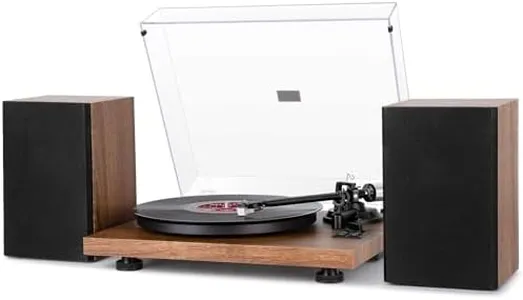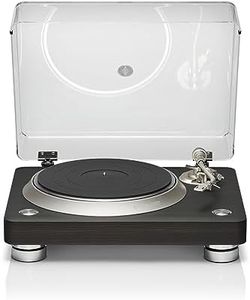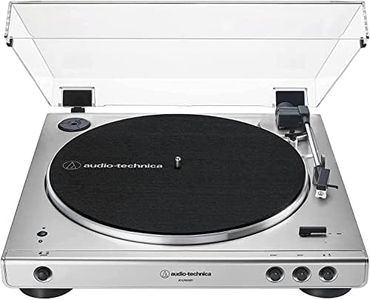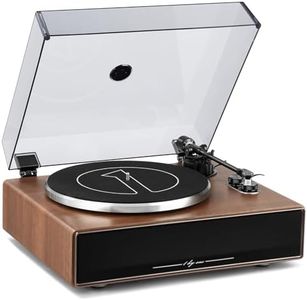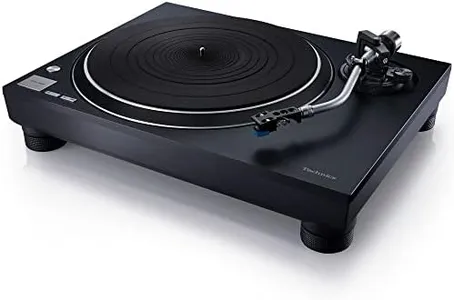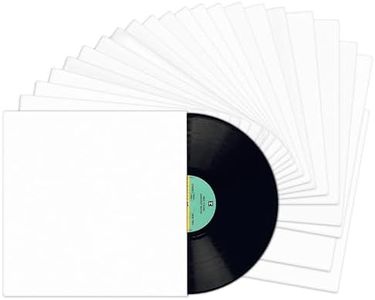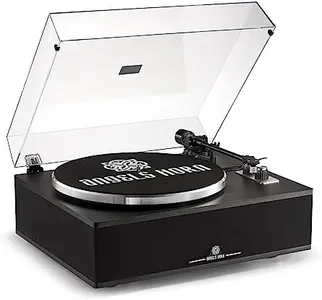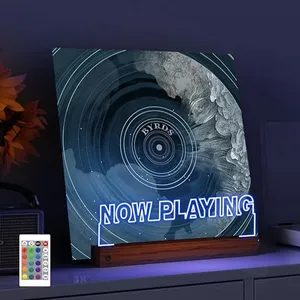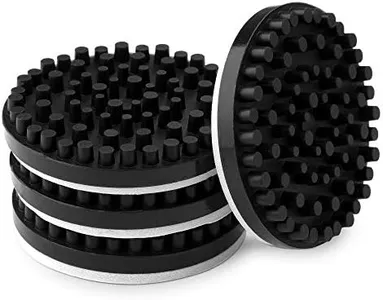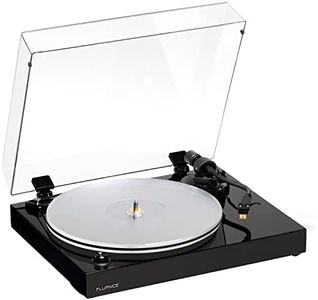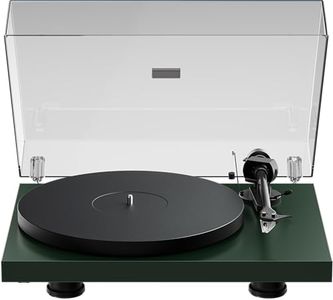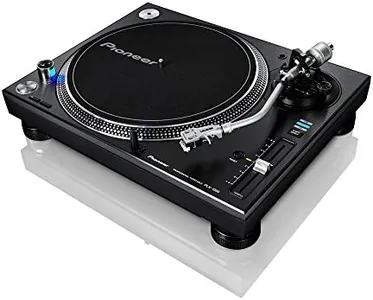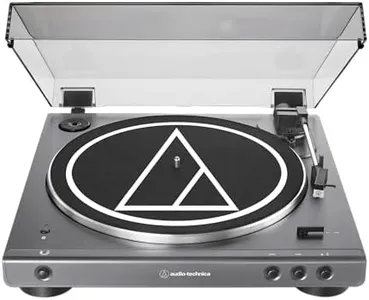10 Best Turntables 2025 in the United States
Our technology thoroughly searches through the online shopping world, reviewing hundreds of sites. We then process and analyze this information, updating in real-time to bring you the latest top-rated products. This way, you always get the best and most current options available.

Our Top Picks
Winner
Denon DP-3000NE Fully Automatic Analog Turntable & Vinyl Record Player with Built-in Phono Equalizer | Turntables for Vinyl Records | Unique S-Shaped Tonearm Design | Hologram Vibration Analysis
Most important from
572 reviews
The Denon DP-3000NE is a well-built turntable that suits vinyl lovers who want flexibility and quality in one package. It features a direct drive motor, which means the platter reaches its speed quickly and maintains stable rotation, giving a more consistent sound than belt-driven models that may fluctuate. It sits on a sturdy MDF chassis with an attractive dark ebony wood veneer, which helps reduce unwanted vibrations.
A standout feature is the special S-shaped tonearm, designed to minimize vibration and improve tracking accuracy. This tonearm allows you to use either MM (moving magnet) or MC (moving coil) cartridges, offering freedom if you want to upgrade your cartridge later. It supports all common record speeds: 33 1/3, 45, and 78 RPM, making it versatile for different kinds of vinyl.
Weighing over 40 pounds, it’s a solid and stable unit, but its weight and size mean it’s less portable than lightweight models. Also, the direct drive may produce slightly more motor noise than a belt drive, although Denon's technology aims to minimize this. This turntable provides a rich, vivid sound and user-friendly features that appeal especially to vinyl enthusiasts looking to enjoy their collection with precision and style, while featuring classic aesthetics and compatibility with a wide range of records.
Most important from
572 reviews
Audio-Technica AT-LP60XBT-SV Fully Automatic Bluetooth Belt-Drive Stereo Turntable, Silver, Hi-Fi, 2 Speed, Dust Cover, Anti-Resonance, Die-cast Aluminum Platter
Most important from
8583 reviews
The Audio-Technica AT-LP60XBT-SV is a fully automatic belt-drive turntable, making it easy to use for those new to vinyl or anyone who prefers hassle-free operation. It features a die-cast aluminum platter, which helps reduce unwanted vibrations, providing clearer sound than plastic platters. The turntable supports two speed settings, 33 1/3 and 45 RPM, covering the most common record types. It comes with a built-in preamp, meaning you can connect it directly to powered speakers or audio systems without needing an external phono preamp. Another notable feature is its Bluetooth capability, allowing wireless streaming to compatible speakers or headphones, adding modern convenience to a classic device.
The tonearm and cartridge are designed to work well for casual listening, though it is not aimed at high-end audiophiles who might want customizable or upgradeable components. Its plastic body keeps it lightweight but might not feel as sturdy as heavier models. The turntable also includes a dust cover and anti-resonance features to protect your records and improve sound quality. This model is ideal for beginners or those seeking a straightforward, stylish turntable with decent sound quality and wireless options, while those looking for top-tier sound fidelity or advanced manual controls might prefer other models.
Most important from
8583 reviews
1 BY ONE Bluetooth Turntable HiFi System with 36 Watt Bookshelf Speakers, Patend Designed Vinyl Record Player with Magnetic Cartridge, Wireless Playback and Auto Off
Most important from
3329 reviews
This 1byONE Bluetooth Turntable offers a solid setup for vinyl lovers who want both traditional and modern playback options. It features a high-quality Moving Magnet cartridge that delivers warm, clear sound, which is great if you want enjoyable audio without too much fuss. The solid iron platter and adjustable counterweight help keep the records stable and reduce skipping, enhancing the listening experience. Bluetooth connectivity lets you stream music from devices easily, adding flexibility beyond just vinyl playback.
It comes with built-in speakers and also allows connection to external powered speakers using RCA outputs, so you can use it as a standalone system or integrate it with your existing audio gear. The USB output is a handy feature for those who want to convert their vinyl into digital files, making it easier to enjoy your collection on the go.
This turntable only supports 45 RPM speed, which limits playing some vinyl that require 33 1/3 RPM. While it has a built-in preamp, users with high-end receivers might prefer an external preamp for better sound customization. Weighing about 21 pounds with a wooden finish, it’s a bit bulky but offers a classic look that fits well in a home audio setup. This product is a good choice for casual listeners who want a blend of vinyl and digital music options with decent sound quality and ease of use.
Most important from
3329 reviews
Buying Guide for the Best Turntables
Choosing the right turntable can greatly enhance your music listening experience. Whether you're a casual listener or an audiophile, understanding the key specifications of turntables will help you make an informed decision. Here are the main factors to consider when selecting a turntable that best fits your needs.FAQ
Most Popular Categories Right Now
